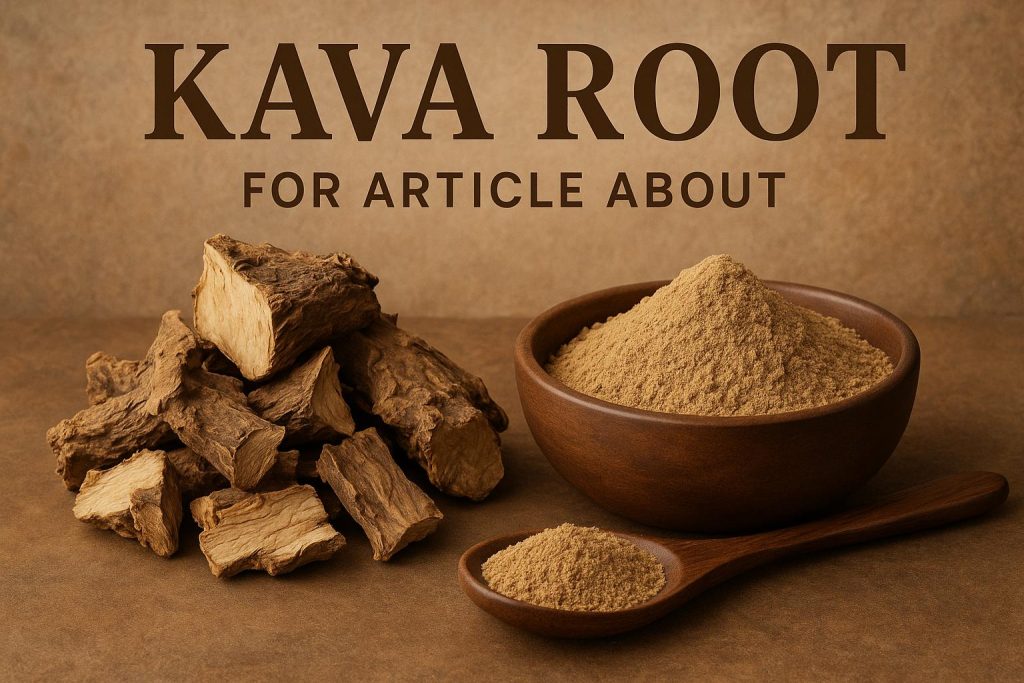
Introduction to Kava Root
Kava root, scientifically known as Piper methysticum, originates from the South Pacific islands. This remarkable plant plays an essential role in the cultural practices of many Pacific Islander communities. Traditionally, the roots have been utilized to create a ceremonial drink integral to these cultures. Its influence extends beyond the islands, catching the interest of modern herbal medicine.
Botanical Characteristics
Kava belongs to the pepper family, known for its distinctive characteristics. The plant can grow to a significant height, often reaching several feet. One of the most recognizable features of the kava plant is its vibrant, heart-shaped leaves. These leaves complement the thick, woody stems that support the plant. However, the true essence of kava lies in its root. The root is noted for its earthy, fibrous texture, which is integral to producing the traditional kava beverage.
Active Compounds
The efficacy of kava largely comes from its active compounds, primarily kavalactones. In scientific discussions, more than a dozen different kavalactones have been identified in the kava root. These compounds provide the plant with its unique properties, particularly its psychoactive effects. These effects encompass relaxation, mood enhancement, and sedation, contributing to kava’s reputation as a calming agent. Understanding these compounds better can provide insight into kava’s therapeutic and recreational uses.
Traditional Uses
For centuries, kava has been integral to social and ceremonial customs among Pacific Islanders. It features prominently in various ceremonies aimed at fostering communal harmony and resolving conflicts. The preparation process involves grinding or pounding the root into a powder, which is then mixed with water or coconut milk to create the traditional kava beverage. The preparation is considered an art form, reflecting the community’s skills and traditions.
Cultural Significance
In traditional settings, special containers are employed for the preparation and serving of kava. These containers are often elaborately carved, symbolizing the ritual’s cultural importance. Drinking kava is a key component of social gatherings and ceremonies, acting as a symbol of respect and unity. The ritual of consuming kava continues to be a powerful communal activity that reinforces social bonds.
Modern Use and Applications
In recent decades, there has been a growing interest in kava beyond its traditional uses. This interest is specifically centered on its therapeutic potential. Kava is now marketed worldwide as a natural remedy for a variety of conditions, including anxiety, insomnia, and muscle tension. The increasing appeal of kava has led to various forms of its consumption, such as capsules, extracts, and teas. These modern adaptations have introduced kava to new audiences who seek natural solutions for stress and relaxation.
Research and Considerations
Several studies highlight kava’s potential anxiolytic properties. However, the possibility of liver toxicity remains a concern, leading to regulatory scrutiny in certain areas. Consumers intending to incorporate kava into their lifestyle should consult healthcare professionals to understand the benefits and risks better. For accurate and detailed information on kava, individuals can consult reliable healthcare sources like the National Center for Biotechnology Information (NCBI).
Regulatory Status
The legal status of kava varies significantly across the globe. This variance is primarily due to the mixed findings related to its safety. Some countries have imposed restrictions or outright bans on kava products, while others regulate it under dietary supplement guidelines. Understanding the local legal framework governing kava is crucial for both vendors and consumers to ensure compliance and safety.
Conclusion
Kava root remains a central cultural symbol for Pacific Island nations, while also finding its place in contemporary herbal medicine. Whether considering its traditional roles or exploring the modern therapeutic applications, kava continues to capture the interest of cultures and scientific communities. Its dual identity as a cultural mainstay and a candidate for natural therapy speaks to its enduring legacy and potential.
The growing body of research is likely to shed further light on its benefits and limitations. As inquiries into kava expand, so too does the understanding of how it can be safely and effectively integrated into modern lifestyles. Thus, kava remains a subject of continued study and exploration, bridging the past’s traditions with the present’s innovations.

